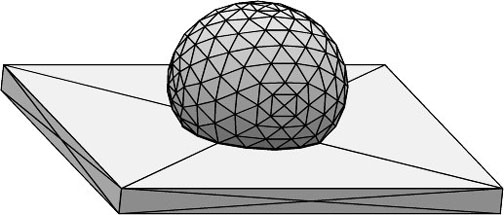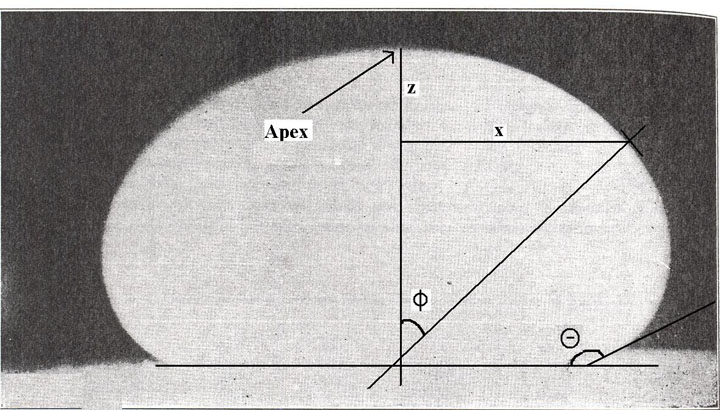Brian DoughertyCentre CollegeProject Title: Wetting and Capillarity in Materials Processing
|
 |
Introduction
There are many methods for obtaining the surface tension of a substance. Unfortunately, these methods require that the substance be in its liquid form. Since many substances have extremely high melting points and are difficult to obtain, this can be a hindrance. By using computer simulations, the surface tension can be determined without having to actually locate a sample of the substance or use expensive equipment to melt the specimen and take measurements. The program Surface Evolver allows the user to create shapes using three dimensional coordinates and input physical properties such as density, contact angle, surface tension, and volume. The program can then evolve the shape into its equilibrium shape based on these properties and gravity.In 1888 Bashforth and Adams published a paper that focused on finding the surface tension of a sessile drop of liquids. By using complex mathematics, Bashforth and Adams created a series of tables that enable the calculation of many physical properties including surface tension by only taking two length measurements from the profile of a sessile drop.
Project Objectives
To determine to what extent the surface tension obtained from the output of computer simulations deviates from the values found from using the Bashforth Adams method.Approach
Several different drop profiles were created with inputted varying surface tensions. These drops were evolved in a uniform manner and the necessary coordinates and lengths were determined. The surface tension was calculated using the Bashforth Adams method and then compared with the surface tension that was applied to the substance in the program.Findings
Surface Evolver proved to be a difficult program to use due to limited documentation and the fact that the program does not have a default units system. Without a units system it was very hard to relate the drop to physical measurements since different volumes and gravitation forces greatly influence the distortion of the drop and therefore the measurements obtained from it. By comparing the degree of distortion of a drop with unitless volume to different drops of known volume a range of units was hypothesized. No definite correlation, however, could be found. The accuracy of the program ranged from a 4% deviation to measurements that could not be physically possible. Sessile Drop Created With Surface Evolver. |
 Geometry of a Sessile Drop. |
Contact me: bpdoug00@centre.edu
